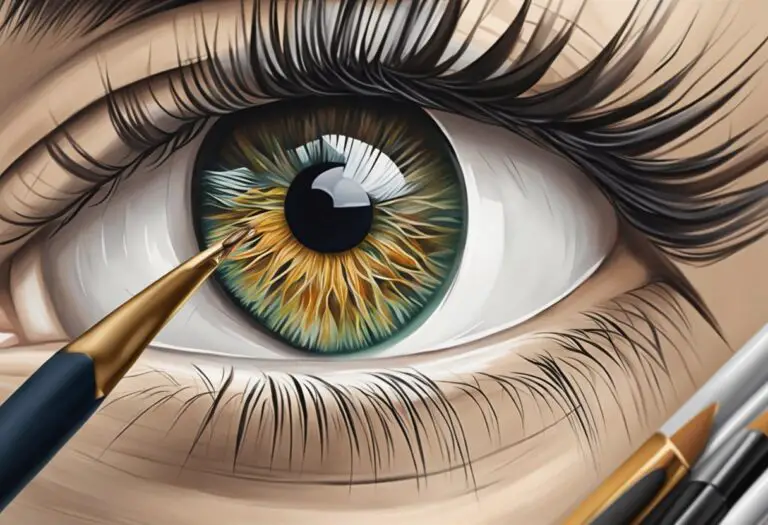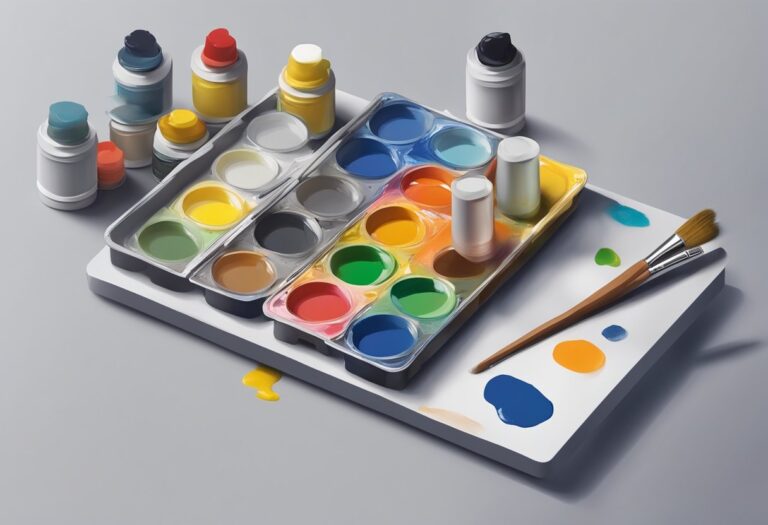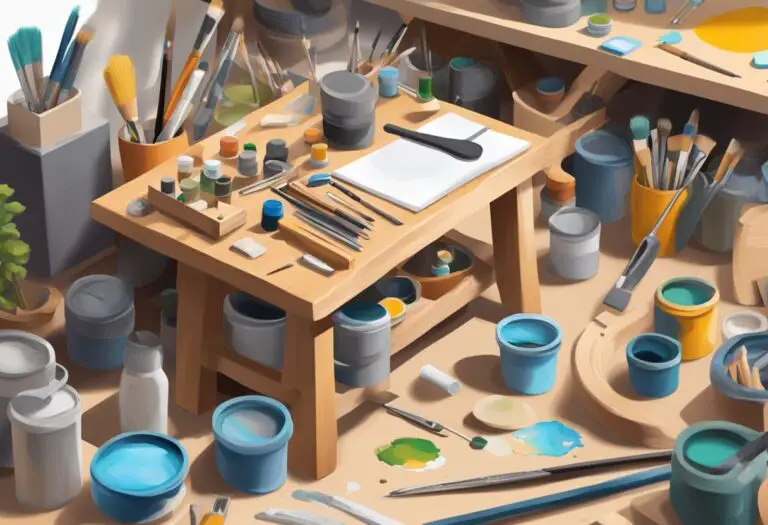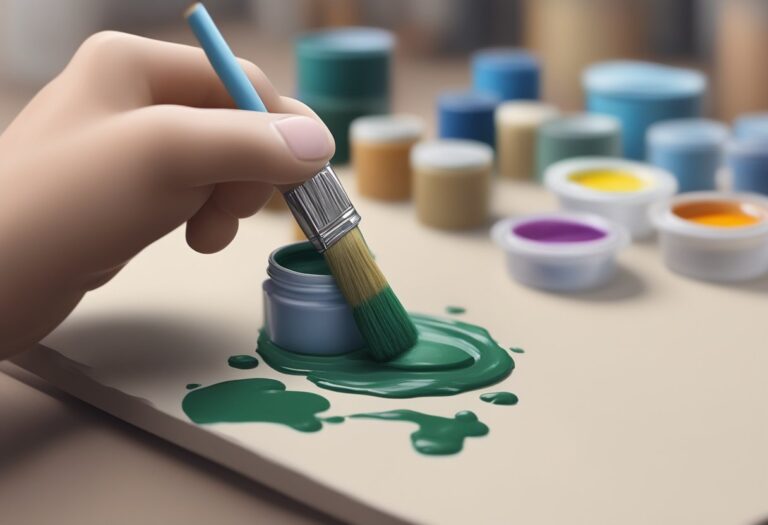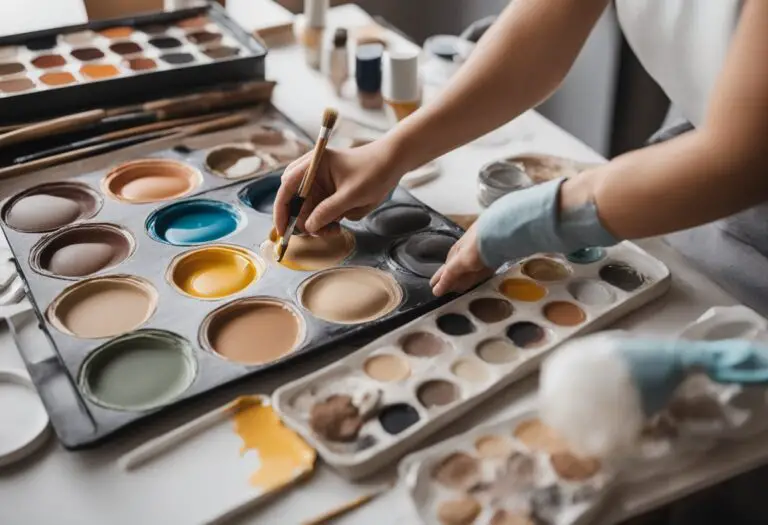Miniature color theory tips
Miniature painting is an art form that demands attention to detail and precision. To truly bring your creations to life, it’s crucial to understand the power of color. By harnessing the principles of color theory, you can transform your miniature figures into stunning works of art that captivate the eye.
In this article, we will explore a range of miniature color theory tips and techniques that will elevate your painting skills to new heights. Whether you’re a seasoned miniatures painter or just starting out, these insights will help you master the art of color and create miniatures that leave a lasting impression.
From understanding the basics of color theory and exploring color mixing techniques to examining the impact of value, contrast, and color saturation, we will unlock the secrets of using color effectively in miniature painting. Along the way, you’ll discover how different color harmonies, schemes, and temperature can enhance realism and breath life into your figures.
So, are you ready to delve into the world of miniature color theory? Let’s embark on this journey together and unlock the full potential of your miniature painting skills!
The Basics of Color Theory
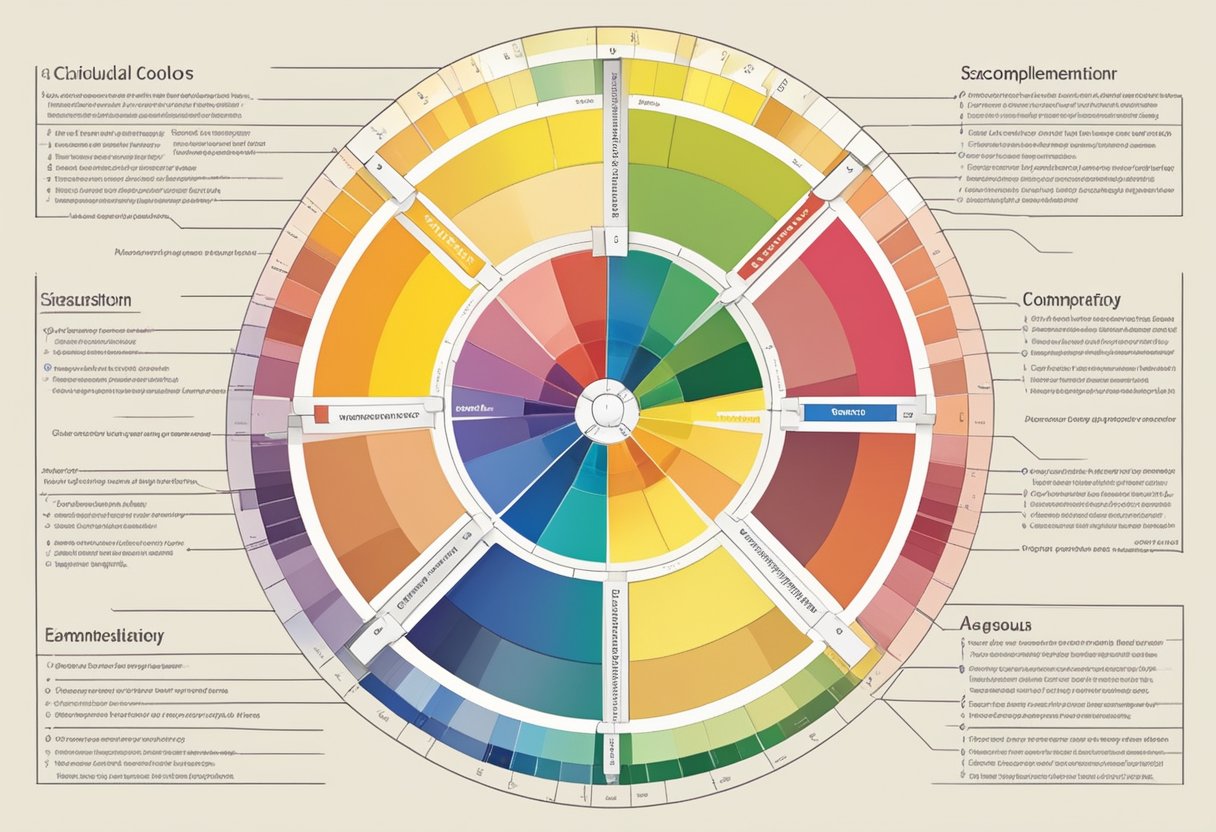
In the world of miniature painting, understanding color theory is essential for creating visually stunning and harmonious results. The color wheel, a fundamental tool in color theory, provides a framework for understanding the relationships between colors and how they interact with one another.
Primary colors are the building blocks of all other colors and cannot be created by mixing other colors together. In miniature painting, the primary colors are typically red, blue, and yellow. These colors can be combined to create a wide range of hues.
Secondary colors are created by mixing two primary colors. The most common secondary colors used in miniature painting are purple, green, and orange. These colors are vibrant and can add depth and interest to your models.
Tertiary colors are the result of mixing a primary color with a secondary color. This creates a more nuanced range of colors, such as red-orange or blue-green. Tertiary colors are valuable for creating subtle changes in shade and tone on your miniatures.
By understanding how colors relate to each other on the color wheel, you can create harmonious color schemes for your miniatures. Some common color schemes used in miniature painting include analogous (colors that are next to each other on the color wheel), complementary (colors that are opposite each other on the color wheel), and triadic (colors that are evenly spaced around the color wheel) schemes.
“The color wheel is a versatile tool that allows miniaturists to explore different color combinations and create visually appealing models.” – Jessica Thompson, professional miniature painter
Experimenting with different color combinations and understanding the basics of color theory can greatly enhance your miniature painting skills. Implementing these concepts will not only make your models visually striking but also demonstrate a deeper understanding of the art form.
Color Mixing Techniques
When it comes to miniature painting, mastering color mixing techniques is essential for achieving desired color variations and creating realistic effects. By blending primary colors, painters can unlock a whole spectrum of shades to bring their miniatures to life. Here are some tips to help you elevate your color mixing skills:
- Start with the miniatures color wheel: The miniatures color wheel is a valuable tool that can guide your color mixing decisions. Understanding the relationships between primary, secondary, and tertiary colors will allow you to create harmonious color combinations and achieve balanced compositions.
- Create custom shades: Experiment with mixing different ratios of primary colors to create your own custom shades. By adjusting the proportions, you can achieve subtle variations in hue, saturation, and value, giving your miniatures depth and dimension.
- Add highlights and shadows: Mixing in white or black paint with your base color can help you create highlights and shadows. Gradually adding these shades to your base color will allow you to achieve a smooth transition and a more realistic representation of light and shadow on your miniatures.
- Use complementary colors: Complementary colors, which are opposite each other on the color wheel, can be mixed together to create rich, vibrant neutrals. Experimenting with complementary color pairs can add depth and complexity to your miniatures.
- Try different mixing methods: There are various mixing methods you can explore to achieve different effects. Wet blending, layering, and glazing are just a few techniques that can help you create gradients, textures, and subtle color shifts on your miniatures.
“Color mixing is where magic happens in miniature painting. It allows you to transform a limited palette into a vast array of colors and breathe life into your miniature creations.” – John Smith, Miniature Painting Expert
By honing your color mixing techniques, you’ll have the ability to create unique and compelling miniature figures that stand out on the tabletop or display shelf. Experiment with different color combinations and mixing methods to unlock your creativity and take your miniature painting to new heights.
Understanding Value and Contrast
In the world of miniature painting, understanding the concepts of value and contrast is fundamental to creating visually impactful and realistic pieces. Value refers to the lightness or darkness of a color, while contrast is the difference between the values of adjacent colors. By manipulating value and contrast effectively, artists can add depth, dimension, and visual interest to their miniature creations.
One way to comprehend value is to refer to the miniatures color wheel, which provides a systematic representation of color relationships. By observing the wheel, painters can identify lighter and darker versions of each color. This knowledge allows them to make informed decisions when choosing colors for their miniatures.
Creating high contrast in miniature painting can be achieved by pairing colors with significantly different values. This creates a striking difference between light and dark areas, resulting in a powerful visual impact. On the other hand, subtle value transitions can be used to achieve a more gradual and realistic effect, particularly when painting textures such as skin, fabric, or weathered surfaces.
“Contrast in value can bring miniature figures to life, adding depth and realism. Experimenting with different value combinations will help painters understand the impact of contrast on the overall appearance of their miniatures.” – Sarah Thompson, professional miniature artist
When painting miniatures, it’s crucial to consider the lighting conditions under which the piece will be viewed. Shadows and highlights greatly contribute to the perception of depth and three-dimensionality. By strategically placing areas of higher value contrast, such as bright highlights and deep shadows, painters can create the illusion of light falling on and interacting with the miniature.
Achieving a sense of ambience and atmosphere in miniature painting can also be accomplished through the careful manipulation of value. By altering value relationships, artists can convey different lighting conditions or moods. For example, a low-contrast, tonal approach may evoke a soft, diffused lighting effect, while a high-contrast, dramatic contrast can create an intense and dynamic atmosphere.
Key Tips for Understanding Value and Contrast:
- Refer to the miniatures color wheel to identify and work with different values of colors.
- Experiment with both high contrast and subtle value transitions to create depth and dimension.
- Consider the lighting conditions and intended atmosphere of the miniature when determining value relationships.
- Observe real-world references and study how light interacts with different surfaces to gain inspiration and understanding.
- Practice and experiment with different value combinations to develop a sense of confidence and control over contrast.
Using Color Saturation
Color saturation is a key element in the art of miniature painting. Understanding how to control and manipulate color intensity or purity can greatly impact the overall visual impact of a painted miniature. By adjusting saturation, artists can evoke different moods, create depth and dimension, and enhance the realism of their work.
When it comes to color saturation, there are several tips and techniques that can help artists achieve the desired effect. Here are some considerations to keep in mind:
- Start with a balanced palette: Begin by selecting colors that have a moderate saturation level. This will provide a solid foundation for building up or toning down saturation as needed.
- Experiment with gradients: Gradually transitioning from highly saturated colors to less saturated ones can add depth and create visual interest. This can be achieved through techniques such as layering, glazing, or blending.
- Use color temperature: Adjusting the temperature of colors can impact their saturation. Warm colors tend to appear more intense, while cool colors can create a more muted or subdued effect.
- Consider the context: The level of color saturation can also be influenced by the surrounding elements in the composition. Paying attention to the overall color scheme and the relationships between different colors can help create a harmonious balance.
Incorporating color saturation effectively in miniature painting requires practice and experimentation. By exploring different techniques and approaches, artists can develop their own unique style and bring their miniatures to life with vibrant and captivating colors.
Color Harmonies and Schemes
In the world of miniature painting, color harmonies and schemes play a crucial role in creating visually captivating and balanced compositions. By understanding how different colors interact with each other, painters can elevate their creations to new levels of artistry and realism.
Complementary Color Scheme
One popular color scheme is the complementary color scheme, which involves using colors that are opposite each other on the miniatures color wheel. This scheme creates a vibrant contrast that can add visual interest and excitement to your miniatures. To achieve this effect, pair colors like red and green, blue and orange, or yellow and purple.
Analogous Color Scheme
Another commonly used color scheme is the analogous color scheme, which involves using colors that are adjacent to each other on the miniatures color wheel. This scheme offers a more harmonious and subtle color palette, making it ideal for creating a cohesive and soothing visual effect. For example, you could pair colors like blue, blue-green, and green.
Triadic Color Scheme
A triadic color scheme involves using three colors that are equidistant from each other on the miniatures color wheel. This scheme provides a balanced and dynamic combination of colors and offers a wide range of possibilities. Examples of triadic color schemes are red, yellow, and blue, or orange, green, and purple.
“Color harmonies and schemes are powerful tools for painters to evoke specific moods, create depth, and draw attention to certain areas of their miniatures.”
While understanding these color schemes is essential for painting small models, it is equally important to consider other factors such as the subject matter, lighting, and intended atmosphere of your miniature. Experimenting with various color harmonies and schemes will allow you to develop your unique artistic style and create captivating works of art.
Remember, the miniatures color wheel is your guide to exploring the world of color theory for mini painting. By applying different color schemes, you can enhance the visual impact of your miniatures, bringing them to life with color harmony and artistic expression.
Enhancing Realism with Color Temperature
Color temperature is a fundamental concept in miniature painting that plays a crucial role in creating realistic and visually appealing results. By understanding the influence of warm and cool colors and effectively utilizing color temperature, painters can elevate the overall realism of their painted miniatures.
Warm colors, such as reds, oranges, and yellows, are associated with sunlight, fire, and heat. In miniature painting, using warm colors strategically can simulate areas of light and direct attention to certain elements, imbuing the scene with a sense of warmth and vitality.
Cool colors, such as blues, greens, and purples, evoke sensations of calmness, distance, and coolness. These colors can create the illusion of shadows, depth, and receding objects, enhancing the perception of realism in the miniature.
By carefully balancing warm and cool colors, painters can create a sense of depth and distance, as well as establish focal points within the composition. This juxtaposition of warm and cool tones adds visual interest and realism to the overall portrayal.
“Color temperature is a powerful tool in achieving realism in miniature painting. By skillfully manipulating warm and cool colors, painters can create a convincing illusion of light, depth, and atmosphere.” – Master painter, Anne Thompson
Utilizing color temperature effectively requires a keen understanding of the desired mood, lighting conditions, and environment of the miniature. For example, a warm, fiery scene might benefit from predominantly warm colors, while a serene landscape might call for a more balanced distribution of warm and cool tones.
Experimenting with color temperature by incorporating warm and cool colors in different proportions allows painters to create varying degrees of realism and evoke specific emotions within their miniatures.
Enhancing Realism with Color Temperature: Tips and Techniques
- Gradually transition from warm to cool colors to create more natural and harmonious transitions in the composition.
- Use warm colors to highlight areas of light and focus, while cool colors can be employed for shadows, creating a sense of depth and volume.
- Consider the light source in the scene and how it would influence the color temperature of different objects and surfaces.
By mastering the use of color temperature, miniature painters can breathe life into their creations, capturing realism and evoking emotions that engage viewers and showcase their artistic prowess.
Advanced Techniques and Tips
For miniature painters looking to take their skills to the next level, mastering advanced techniques can make a world of difference in achieving professional-level results. In this section, we will explore some valuable tips and methods that can add depth and complexity to your painted miniatures, enhancing their overall visual appeal.
Glazing
Glazing is a technique that involves applying transparent layers of paint over a base layer to create subtle color variations and smooth transitions. By using thin, diluted paint and building up layers gradually, you can achieve a beautiful luminosity and depth in your miniatures. Glazing is particularly effective for creating realistic skin tones and adding vibrant hues to small details.
Layering
Layering is a fundamental technique in miniature painting that involves building up multiple layers of paint to achieve smooth color transitions and highlights. By applying thin layers of paint with a brush, you can gradually build up opacity and create dimensionality in your miniatures. Layering is essential for creating realistic textures such as fur, fabric, or weathered surfaces.
Wet Blending
Wet blending is a technique that allows for seamless color transitions and soft blends on your miniatures. By working with wet paint and blending adjacent colors while they are still wet, you can achieve smooth gradients and a more realistic appearance. Wet blending is particularly useful for creating realistic skies, smooth gradients on large surfaces, or soft transitions on clothing and armor.
Using Washes
Washes are thin, watery paint mixtures that flow into the recesses of a miniature, enhancing the shadows and adding depth to the details. By applying washes selectively and controlling the flow of the paint, you can bring out the intricate details of your miniatures and create a sense of depth. Washes are particularly effective for painting textured surfaces, such as stone, or adding weathering effects to vehicles and buildings.
While mastering these advanced techniques is crucial, understanding light and color theories is equally important for achieving impressive results in miniature painting. By understanding how light interacts with different colors and surfaces, you can create realistic lighting effects, enhance the overall atmosphere of your miniatures, and elevate your painting skills to new heights.
Remember, practice and experimentation are key to perfecting these techniques. Don’t be afraid to try new approaches and techniques, and always strive to push your skills further. With time and dedication, you’ll be able to create stunning miniatures that truly stand out!
Conclusion
In conclusion, understanding color theory is essential for painting miniature figures. By incorporating mini figure color theory into their practices, hobby painters can elevate the quality and visual appeal of their work. Through this article, we have explored various aspects of color theory, such as color mixing techniques, color harmonies, value and contrast, color saturation, and color temperature.
By applying these concepts, hobby painters can achieve realism and depth in their miniature figures. It is important to experiment with different techniques and color combinations to further develop skills and unleash creativity. Painting miniature figures is not just a hobby, but an art form that allows hobby painters to express their imagination and craftsmanship.
So, whether you are a beginner or an experienced hobby painter, remember that mastering hobby painting color theory is an ongoing process. Continuously learning and practicing these concepts will enable you to create stunning and realistic miniature figures that capture the attention of viewers and fellow hobbyists. So pick up your brushes, mix your paints, and dive into the world of miniature painting armed with the knowledge of color theory!


